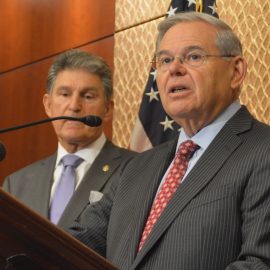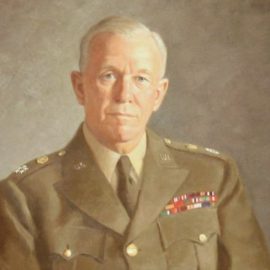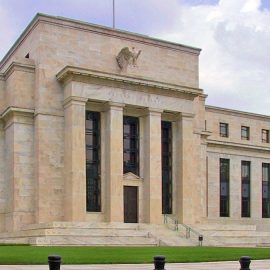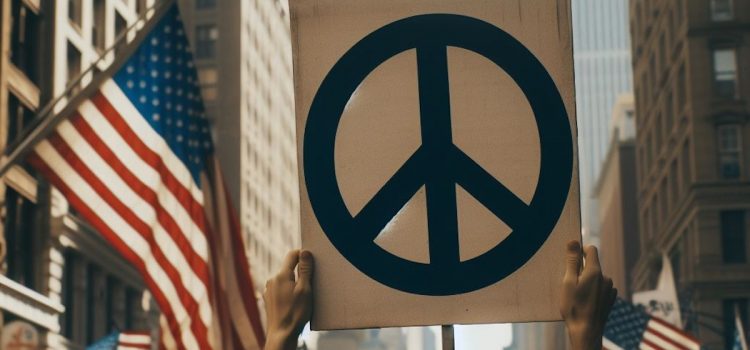
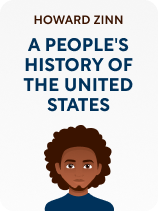
This article is an excerpt from the Shortform book guide to "A People's History of the United States" by Howard Zinn. Shortform has the world's best summaries and analyses of books you should be reading.
Like this article? Sign up for a free trial here.
How did the US involvement in Vietnam turn into a full-scale war? What tactics did the US employ? In what ways did the anti-Vietnam War movement gain momentum in the US?
In the chapter “The Impossible Victory: Vietnam” of his book A People’s History of the United States, Howard Zinn details the complexities of the Vietnam War. He sheds light on the significant role of the draft in shaping public sentiment and resistance movements.
Continue reading to get a people’s history of the Vietnam War.
A People’s History of the Vietnam War (1963-1972)
In the chapter “The Impossible Victory: Vietnam,” Zinn provides a people’s history of the Vietnam War. He explains that, in Vietnam, the US tried and failed to covertly stop popular Vietnamese resistance against the French colonial government. Instead of trying to work with the initially cooperative Vietnamese revolutionary movement, the US created a capitalist dictatorship in South Vietnam and eventually went to war with North Vietnam to defend it. During the war, the US used a strategy of mass death and destruction—using chemical and incendiary weapons to destroy wildlife, bombing civilian infrastructure like dams to cause starvation, and indiscriminately killing civilians.
From the mid to late ’60s, the anti-Vietnam War movement became a popular force across the US. Black Americans in the Civil Rights Movement started the campaign, but thousands of students, young people, and eventually the middle class joined. Civilians protested and dodged the draft, while anti-war American soldiers deserted, refused to follow orders, or even killed their commanding officers in protest. Faced with mounting domestic political pressure and a determined, skilled North Vietnamese insurgency, US elites eventually had to admit defeat. They withdrew American soldiers from Vietnam, and South Vietnam collapsed shortly afterward.
(Shortform note: Despite the brutality of the war, relations between the US and Vietnam mended within a few decades. Vietnam in particular sought normalization of relations relatively quickly after the war’s end, wanting the political legitimacy and economic benefits it would provide. And while the US was initially hesitant to cooperate and levied a trade embargo on Vietnam, they lifted it and normalized relations in the years following the end of the Cold War when communism was no longer seen as an existential threat.)
| Protesting the War or the Draft? Many historians and analysts argue that the anti-Vietnam War movement was successful in large part because of the US policy of conscription. Conscription meant that a large number of average Americans were forced to care about the war—they could be forced to fight and die in it at any time. Since many of them had little to no personal stake in the conflict itself, they turned against the draft system. Anti-draft sentiment then fed into and naturally bolstered existing anti-war sentiment, making the movement bigger, more urgent, and more consistent. It also led to the direct disruption of the US capacity to wage war, as draft dodgers hampered military recruitment efforts. To further cement the importance of resistance to the draft, historians compare the anti-Vietnam War and anti-Iraq War movements. The US didn’t draft soldiers for the Iraq War, meaning Americans had a much smaller personal stake in it. Consequently, the anti-Iraq War movement lacked the same level of commitment and public support as the anti-Vietnam War movement, despite organizing larger protests on several occasions. |

———End of Preview———
Like what you just read? Read the rest of the world's best book summary and analysis of Howard Zinn's "A People's History of the United States" at Shortform.
Here's what you'll find in our full A People's History of the United States summary:
- A bottom-up view of American history focusing on the people, not the politicians
- How Indigenous people, Black Americans, women, laborers, and activists lived
- Why social movements of the 60s and 70s failed to create lasting change


